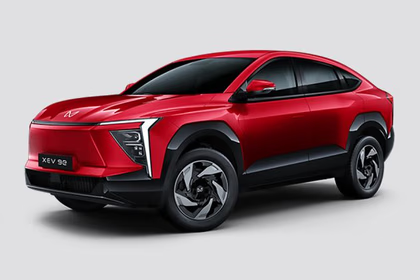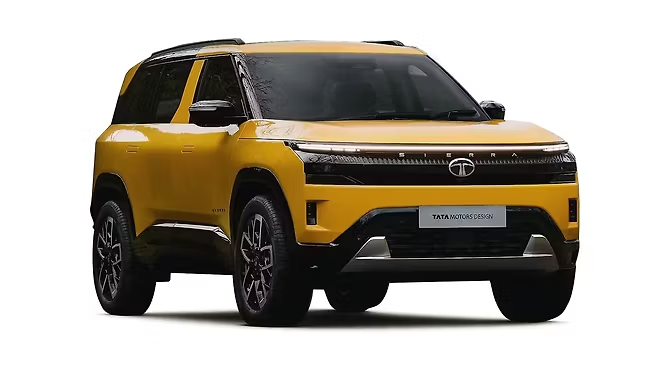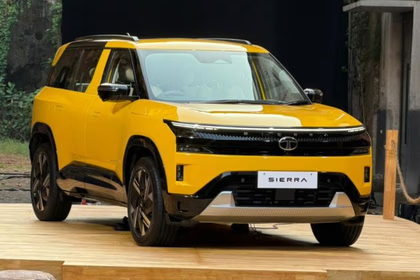Introduction
India EV market stands at a critical juncture. Yet on the other hand, uptake remains sluggish due to considerable hurdles. In this context, fintech applications—such as mobile loan apps, simple EMI schemes, and subscription models—may be the actual game-changer. They can reduce the cost of EVs, bridge the interest-ownership gap, and accelerate India EV revolution.
Fintech innovations—anything from digital platforms for lending to subscription models—may be the decisive catalyst in driving EVs within financial reach, widening the gap between aspiration and ownership, and finally boosting the India EV revolution.

India EV market faces affordability and financing challenges:
- India EV market is developing at a fast pace, but remains affordability-constrained.
- Higher up-front costs discourage many prospective customers from adopting EVs, making them less affordable.
- Few financing options for EVs are available or not readily accessible.
- Consumer reluctance continues despite increasing interest in electric mobility.
Government incentives, climate goals, and rising fuel costs are pushing EV adoption
- Government subsidies such as FAME India subsidies promote EV uptake.
- Increases in fuel prices make EVs an affordable long-term option.
- Climate targets and emissions reduction goals urge producers to make EVs.
- City centers and Tier-2/3 cities reflect growing concern for sustainable mobility solutions.
Fintech could play a transformative role:
- Fintech can diminish financial hurdles for consumers in the form of loans, BNPL, and subscription plans.
- Fintech allows automakers to reach a broader base with flexible payment solutions.
- Digital financial solutions can provide insurance, charging, and financing under one umbrella.
- By filling the financial and technological voids, fintech may be the driving force for the next generation of EV adoption in India.
Current State of EV Adoption in India
India’s electric vehicle industry has seen tremendous growth driven by increased awareness of the environment, fiscal incentives from the government, and improvements in technology. EV sales have picked up momentum across the two-wheeler, three-wheeler, and passenger vehicle segments with strong traction in urban areas. Consumer reluctance, based primarily on financial limitations and range anxiety, is still driving purchase behavior, which underscores the necessity for novel alternatives such as fintech-based financing models.
EV sales trends, growth rates, and projections:
- India EV sales have increased 20–25% YoY over the past 3 years.
- Two-wheelers lead EV sales (~80%), followed by three-wheelers and passenger cars.
- Delhi, Bengaluru, Pune, and Mumbai are the top markets.
- Forecasts suggest EVs may represent 30–40% of vehicle sales by 2030.
- Government incentives such as FAME II have supported over 3 lakh EVs until now.
High upfront costs, limited access to loans, and charging infrastructure gaps:
- High initial costs of EVs continue to be a significant deterrent.
- Restricted availability of vehicle loans, particularly in Tier-2 and Tier-3 cities.
- Charging stations are still rare and not evenly spread.
- Absence of standard battery swapping and service networks.
- Resale value and long-term performance uncertainty.
Hesitancy due to range anxiety and financial constraints:
- Range anxiety is still a top concern for semi-urban and urban customers.
- Several prospective buyers are hesitant due to the increased upfront investment.
- Knowledge of subsidies and financing is still limited.
- Customers are increasingly interested in two-wheelers and small EVs over larger cars.
- Trial-and-error adoption is prevalent: customers tend to wait for peer acceptance.
Fintech Innovations Relevant to EVs
Fintech is increasingly becoming a disruptor in the India EV space by solving one of the most significant barriers to adoption—funding. Conventional banks usually avoid lending money towards electric vehicles because of the lack of knowledge surrounding resale value, as well as comparatively newer technology. Fintech companies, though, are bridging this gap with cutting-edge financial products specifically designed for EV consumers.
From convenient digital loans and “Buy Now, Pay Later” (BNPL) plans to subscription and leasing models with flexible plans, these products are making consumers’ entry easier. Concurrently, fintech-powered insurance, usage-based premiums, and convenient digital payment solutions for charging points are making the ownership experience easier. Combined, these products are not only driving EV affordability but also promoting trust and convenience in urban as well as rural markets.
Easy access to vehicle loans for urban and rural buyers:
- Instant, paperless EV loan approvals on mobile applications.
- Alternative credit assessment for first-time buyers with no strong credit history.
- Collaboration with auto manufacturers and dealerships to provide instant finance at the point of sale.
- Microloans customized for e-rickshaw and delivery fleet owners.
Lowering entry barriers for first-time EV buyers:
- Enables consumers to pay for EVs in installments.
- Lowers up-front payment responsibility, leading to more rapid take-up.
- Most popular with young, tech-literate buyers in metros.
- There is an increasing possibility of bundling with EV accessories and charging subscriptions.
Fintech platforms enabling EV leasing for monthly payments:
- EV subscriptions on a monthly or annual basis instead of purchase.
- Lower initial costs make EVs more available to the mass market.
- Best suited for corporate fleets and gig-economy users (delivery, ride-hailing).
- Upgrade ability to newer models without concerns of resale.
Usage-based insurance policies and digital claim processes:
- IoT and telematics-based usage-based insurance.
- Digital settling of claims eliminates settlement delay.
- Premiums are tied to driving behavior and distance covered.
- Bundle insurance-financing packages to make ownership easier.
Fintech Impact in EV Markets
Top EV makers have already collaborated with fintech companies to offer simple EMI plans, subscription offerings, and instant digital loans that allow EVs to reach a broader consumer base.
Global markets like the U.S. and China also make excellent case studies of how digital financing platforms combined with government incentives and consumer education can drive adoption. These cases illustrate not only the potential but the actual effect of fintech in breaking down affordability challenges and creating EVs as a mass market option.
Ola Electric financing partnerships, Ather Energy‘s EMI options:
- Ola Electric collaborated with several fintech lenders to provide instant loans and EMIs on its scooters.
- Ather Energy offers financial solutions with flexible EMI plans beginning from as little as ₹3,000/month.
- Greaves Electric Mobility launched micro-financing plans for e-rickshaw and delivery fleet operators.
- Subscription models are picking up pace in metros, where users can lease rather than own EVs outright.
Tesla financing in the U.S. and Europe; digital EV leasing platforms in China:
- Tesla (U.S. & Europe): Provides in-house leasing and financing through online platforms.
- China: Leasing platforms for EVs based on fintech and app-based microloans have boosted penetration among middle-income consumers.
- European startups: BNPL strategies packaged with charging solutions for business fleets.
- Financing, insurance, and charging apps are integrated into unified digital ecosystems.
How fintech solutions increased adoption rates and customer retention:
- Fintech diminishes the “cost fear” threshold, inhibiting first-time EV purchasing.
- Collaborations between car manufacturers and fintech players spur broader adoption across urban and rural areas.
- Fleet operators (ride-hailing & delivery) gain the most from pay-as-you-go loans and subscriptions.
- Successful models overseas indicate that India can also replicate the success with robust policy-fintech tie-ups.
Opportunities for Fintech-EV
The India EV industry is only at the nascent stage, so the potential for fintech integration is huge. In addition to loans and EMIs, fintech can be at the forefront of developing an ecosystem that integrates financing, insurance, charging payments, and even government subsidies into a seamless bundle. For the manufacturers, this provides new streams of revenue in the form of leasing and subscription models.
In contrast, for the consumers—particularly in Tier-2 and Tier-3 cities—it makes EVs much more affordable and less risky. Additionally, fintech can facilitate funding for startups and small fleet operators through cutting-edge funding mechanisms such as crowdfunding and peer-to-peer lending, so that the fruit of electric mobility reaches every rung of society. The intersection of fintech and EVs may thus make India’s vision of clean mobility arrive much earlier than with conventional models by themselves.
Expanding financing access to Tier-2 and Tier-3 cities:
- Digital lending reaches Tier-2 and Tier-3 towns where banks are reluctant to lend.
- Alternative credit scoring enables first-time borrowers who lack good credit profiles.
- Low-cost financing for gig-economy workers (delivery, ride-hailing) employing EVs.
- Microloans for women entrepreneurs and small businesses allow EV adoption.
Integrating EV charging, insurance, and financing into one app:
- Combined apps to integrate financing + insurance, + charging payments.
- Auto-debit facilities for EMI and charging bills enhance the user experience.
- AI-enabled platforms to offer the best financing plans based on usage behavior.
- Loyalty schemes offer users discounts on charging when they make timely EMI payments.
Crowdfunding & P2P Lending for EV startup:
- EV startups can raise funds through fintech-powered crowdfunding platforms.
- Peer-to-peer lending makes low-interest finance options available to buyers.
- Financing in communities for shared EV fleets in small towns.
- Expands EV uptake from corporate and urban elite purchasers.
Potential for government-fintech collaboration for subsidies and incentives:
- Fintech platforms can disburse subsidies and incentives to purchasers directly.
- Digital records that are transparent help eliminate fraud and ensure accountability.
- Integration with state EV plans to achieve broader adoption objectives.
- Public–private partnerships to widen financing to underserved markets.
Challenges & Risks
Fintech can bring about a new generation of EV adoption in India, but the ride isn’t without challenges. The India EV industry itself is transforming, and integrating it with fintech, which has its own regulatory and trust concerns, makes the landscape more complicated. Excessive risks of defaulting on loans, particularly by first-time borrowers, may keep fintech players from indiscriminate lending.
The lack of proper guidelines for BNPL models, digital lending, and EV resale values may discourage lenders and consumers alike. Cybersecurity threats and risks to data privacy also hang over fintech platforms as they handle more and more sensitive financial and behavioral information. Further, a lack of consumer knowledge regarding accessible financing options keeps many prospective EV buyers outside the fintech-financing system. Unless these risks are proactively addressed, the effect of fintech on EV adoption may prove slower and more patchy than anticipated.
Regulatory hurdles for fintech in auto loans and BNPL:
- There is no set of standardized rules for digital lending and BNPL in the EV market.
- RBI regulations for fintech collaborations are still in development.
- Unclear classification of EV loans and financing of resale value.
- Complicated subsidy payout procedures cause delays for buyers.
Risk of default in EV loans, especially for first-time buyers:
- Numerous first-time buyers of EVs have poor or no credit.
- Delivery/rideshare fleet operators experience unstable income streams and increasing default risk.
- Digital lending rates can be high, deterring long-term payback.
- Defaults might deter lenders from further financing EVs.
Cybersecurity and data privacy concerns with digital financial platforms:
- Digital lending apps process financial and personal information.
- Threat of fraud, phishing, and identity theft in unsecured platforms.
- Behavioral driving data are collected by telematics-based insurance models, raising privacy concerns.
- Consumer trust may weaken in the absence of stringent cybersecurity practices.
Need for consumer education about fintech offerings and EV benefits:
- Several Tier-2/3 city customers lack knowledge of fintech-based financing.
- Limited awareness of government subsidies and EV incentives.
- Apprehension about online fraud leads to hesitation on the part of a few consumers to adopt fintech apps.
- Insufficient education campaigns lower fintech adoption, as well as EV adoption.
The Road Ahead
The coming couple of years will be pivotal for India EV and fintech landscape. Forecasts indicate that if fintech-enabled finance and digital payment options are scaled efficiently, India may double the rate of EV adoption over the next five years. Automakers, fintech companies, and legacy banks will all coalesce in strategic partnerships, creating a hybrid business model that merges technology, financing, and mobility solutions into an integrated ecosystem.
This translates to convenient access to EVs by subscription, lease, and digital low-interest loans. For businesses, it offers the opportunity to electrify fleets in volume with controlled financial risk. Finally, the future leads to a period when Indian EV adoption will be less concerned with cost hurdles and more with convenience, sustainability, and intelligent fiscal innovation.
How fintech could double EV adoption rates in the next 5 years:
- EV adoption might double in the next 5 years with the help of fintech.
- EVs could account for 30–40% of new car sales in India by the year 2030.
- Subscription and leasing options will grow aggressively for fleets and city buyers.
- Rural uptake will be faster through micro-financing and P2P lending platforms.
Strategic Partnerships:
- Automakers are partnering with fintech startups for in-app financing.
- Banks are entering partnerships with EV manufacturers for consumer credit.
- EV startups are bundling insurance, charging, and EMI into one platform.
- Government–private partnerships for simplifying subsidy disbursement through fintech.
Consumer Benefits:
- Increased access to EVs in Tier-2 and Tier-3 cities.
- Lower initial costs with flexible financing.
- More affordable and transparent insurance tied to driving behavior.
- Simplified ownership experience through digital-first platforms.
Encouraging ecosystem collaboration for a greener, financially accessible future:
- Strong spur towards India’s clean mobility and net-zero ambitions.
- Establishing a strong digital-financial ecosystem underpinning mobility.
- An increasing number of startups are entering the EV and fintech space, spurring innovation.
- India is a global leader in “fintech-driven EV adoption.”.
Conclusion
India is poised on the brink of a mobility revolution wherein electric cars are no longer a dream of the future but an unavoidable reality. However, the single biggest hurdle in the way remains the issue of affordability and access. That is where fintech comes in, not as a second-tier player, but as a game-changer. By freeing up innovative finance models—everything from digital lending and subscription schemes to usage-based insurance—fintech can empower EVs to become the mainstream option for individual customers as well as companies.
As government incentives, increased fuel prices, and green objectives propel the market, fintech offers the financial bridge missing to fuel adoption. The next wave of EV adoption will not be technology-fueled alone—it will be driven by the smart, inclusive, and innovative financial solutions that fintech offers.
FAQs
Q1. How do EVs become more affordable in India with fintech?
Fintech systems offer convenient access to digital loans, convenient EMIs, subscription plans, and Buy-Now-Pay-Later options. These facilities lower the load of high initial costs, so EVs can be made more accessible to the masses.
Q2. Are EMI and BNPL available for the purchase of electric vehicles?
Yes. Several Indian EV makers, such as Ola Electric and Ather Energy, already provide EMI facilities with fintech collaborations. BNPL strategies are also surfacing, particularly for two-wheelers and low-cost EVs.
Q3. Can fintech platforms assist with EV insurance and charging payments as well?
Yes. Fintech is increasingly facilitating bundled EV insurance, usage-based pricing, and mobile app-based digital payments for charging stations.
Q4. How important are government incentives in addition to fintech solutions?
Government grants under programs such as FAME II lower the cost of purchasing EVs, while fintech makes financing the remaining amount accessible through online solutions. They complement each other and speed up adoption.
Q5. How is fintech supporting EV startups and fleet operators in India?
Fintech enables startups and fleet operators to access crowdfunding, microloans, and peer-to-peer lending platforms. This helps small businesses and delivery operators to electrify fleets with minimal upfront capital investment.
Q6. Will fintech solutions spur EV adoption in smaller towns and cities?
Yes. Online lending platforms and alternative credit scoring can increase access to EV financing, where banks hesitate to lend. This may fuel quicker adoption beyond metro areas.




